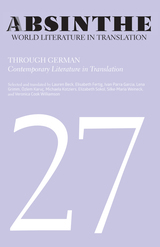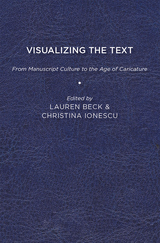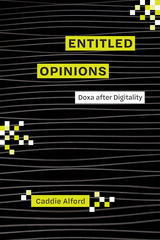3 books about Beck, Lauren

Abiayalan Pluriverses
Bridging Indigenous Studies and Hispanic Studies
Gloria E. Chacon
Amherst College Press, 2024
Abiayalan Pluriverses: Bridging Indigenous Studies and Hispanic Studies looks for pathways that better connect two often siloed disciplines. This edited collection brings together different disciplinary experiences and perspectives to this objective, weaving together researchers, artists, instructors, and authors who have found ways of bridging Indigenous and Hispanic studies through trans-Indigenous reading methods, intercultural dialogues, and reflections on translation and epistemology. Each chapter brings rich context that bears on some aspect of the Indigenous Americas and its crossroads with Hispanic studies, from Canada to Chile. Such a hemispheric and interdisciplinary approach offers innovative and significant means of challenging the coloniality of Hispanic studies.
[more]

Absinthe
World Literature in Translation: Volume 27: Through German: Contemporary Literature in Translation
Lauren Beck
Michigan Publishing Services, 2021
The voices of many countries echo through the selection of contemporary literature featured in Absinthe 27: Through German. Germany, Austria, and Switzerland are all represented in this issue, but so are England, Ghana, Israel, Moldova, Romania, Syria, Turkey, and Ukraine. And while Absinthe 27 does have a distinct international flair, it is not a selection of Migrantenliteratur, a category that fences in writers as foreign rather than German or Austrian or Swiss. Rather, the authors represented are all integral to the German-speaking world and its representation, whether the authors were born there, arrived decades ago, or came recently to perhaps find another home, perhaps pass through. Translated and edited by Lauren Beck, Elisabeth Fertig, Ivan Parra Garcia, Lena Grimm, Özlem Karuç, Michaela Kotziers, Elizabeth Sokol, Silke-Maria Weineck, and Veronica Cook Williamson, Through German presents a fuller picture of what it means to live in the Germanosphere in the 21st century.
[more]

Visualizing the Text
From Manuscript Culture to the Age of Caricature
Lauren Beck
University of Delaware Press, 2017
This volume presents in-depth and contextualized analyses of a wealth of visual materials. These documents provide viewers with a mesmerizing and informative glimpse into how the early modern world was interpreted by image-makers and presented to viewers during a period that spans from manuscript culture to the age of caricature. The premise of this collection responds to a fundamental question: how are early modern texts, objects, and systems of knowledge imaged and consumed through bimodal, hybrid, or intermedial products that rely on both words and pictures to convey meaning? The twelve contributors to this collection go beyond traditional lines of inquiry into word-and-image interaction to deconstruct visual dynamics and politics—to show how images were shaped, manipulated, displayed, and distributed to represent the material world, to propagate official and commercial messages, to support religious practice and ideology, or to embody relations of power. These chapters are anchored in various theoretical and disciplinary points of departure, such as the history of collections and collecting, literary theory and criticism, the histories of science, art history and visual culture, word-and-image studies, as well as print culture and book illustration. Authors draw upon a wide range of visual material hitherto insufficiently explored and placed in context, in some cases hidden in museums and archives, or previously assessed only from a disciplinary standpoint that favored either the image or the text but not both in relation to each other. They include manuscript illuminations representing compilers and collections, frontispieces and other accompanying plates published in catalogues and museographies, astronomical diagrams, mixed pictographic-alphabetic accounting documents, Spanish baroque paintings, illustrative frontispieces or series inspired by or designed for single novels or anthologies, anatomical drawings featured in encyclopedic publications, visual patterns of volcanic formations, engravings representing the New World that accompany non-fictional travelogues, commonplace books that interlace text and images, and graphic satire. Geographically, the collection covers imperial centers (Great Britain, France, the Netherlands, and Spain), as well as their colonial periphery (New France; Mexico; Central America; South America, in particular Brazil; parts of Africa; and the island of Ceylon). Emblematic and thought-provoking, these images are only fragments of the multifaceted and comprehensive visual mosaic created during the early modern period, but their consideration has far reaching implications.
[more]
READERS
Browse our collection.
PUBLISHERS
See BiblioVault's publisher services.
STUDENT SERVICES
Files for college accessibility offices.
UChicago Accessibility Resources
home | accessibility | search | about | contact us
BiblioVault ® 2001 - 2024
The University of Chicago Press









